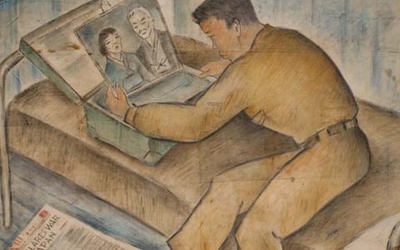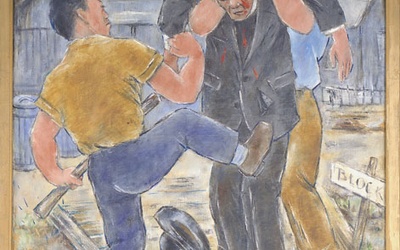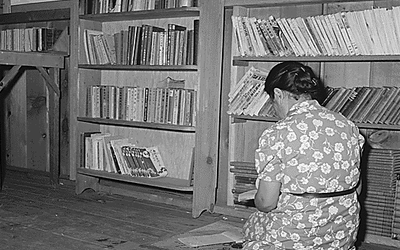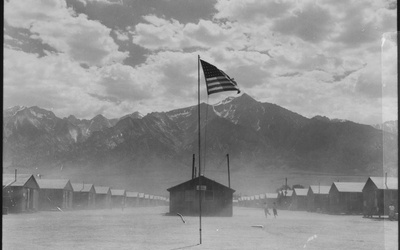Grandmother's Letter: Children and Books in Japanese American Internment Camps

Ms. Sachiko Aoki of the Children's Library Association in Tokyo told me about a letter written by a Japanese American that was published in a Japanese newspaper 10 or 20 years ago. The person spent time in an internment camp for Japanese Americans in the United States during World War II, and wrote that she "cannot forget the librarian who brought books to the camp." Encouraged by this letter, I began researching the lives of children in the internment camps and their relationship with books there.
*Reprinted from issues 133 to 137 of the quarterly magazine "Children and Books" (April 2013 to April 2014) published by the Children's Library Association.
Stories from this series
Chapter 3: Concentration Camps in the Wilderness: 1942-1946 — Part 1 (6)
May 18, 2015 • Yuri Brockett
Read Chapter 3 (5) >> Fresh air, a taste of freedom Yoshiko's father and mother received special permission from the relocation bureau to visit her father's mother and sister in Heart Mountain. Living like a caged bird unconsciously builds up a kind of sediment in the body and mind. Yoshiko was surprised by the state of the two when they returned. Seeing his mother and sister for the first time since the war began restored my father's energy immeasurably. But …
Chapter 3: Concentration Camps in the Wilderness: 1942-1946 — Part 5
May 11, 2015 • Yuri Brockett
Read Chapter 3 (4) >> 2. 1943 Children's daily life—Winter For the past month, the adults at Heart Mountain, including the administration and Japanese Americans, have been working together to build an ice rink by spraying water from fire hoses in several depressions within the camp. The long-awaited opening of the rink was on January 19th. The temperature had started to drop the week before, and on the opening day it recorded -33°C. Despite the extreme conditions, the adults worked …
Chapter 3: Concentration Camps in the Wilderness: 1942-1946 — Part 1 (4)
May 4, 2015 • Yuri Brockett
Read Chapter 3 (3) >> Helping with the harvest — late autumn It is also a fruitful autumn. It is harvest season, but farms in California, Arizona, Idaho, and Wyoming are suffering from a labor shortage. The people who used to help with the harvest have been drafted into the military or moved to cities that are booming with the military demand, so there is no one left. The governor, who is in a difficult position, appeals to his local …
Chapter 3: Concentration Camps in the Wilderness: 1942-1946 — Part 3
April 27, 2015 • Yuri Brockett
Read Chapter 3 (2) >> September without school - Autumn The American school year ends in June, and after a long summer vacation of about three months, a new start begins in September. In September, children are given new clothes to match their height, which has increased over the summer, as well as notebooks and pencils, and look forward to reuniting with friends they have not seen for a long time. However, in September 1942, things were different for the …
Chapter 3: Concentration Camps in the Wilderness: 1942-1946 — Part 2
April 20, 2015 • Yuri Brockett
Read Chapter 3 (1) >> Community libraries as seen through camp newspapers Initially, each camp published a mimeographed newspaper, which played an important role in delivering everything from notices from the WRA to community news to each household. The WRA also subjected this newspaper to thorough censorship three times: when the manuscript was compiled, when it was written on wax paper with a stylus or typewriter, and when it was printed. Manzanar had a newspaper called the Manzanar Free Press, …
Chapter 3: Concentration Camps in the Wilderness: 1942-1946 — Part 1
April 13, 2015 • Yuri Brockett
Read Chapter 2 (6) >> Once again, with preparations for their arrival incomplete, the Army decided to move the Japanese from the "assembly center" to a "relocation address" inland, far from civilization. After two days of sitting on hard seats in old, unused trains with the window shades down and covered in soot, the Japanese finally arrived at Minidoka from the Puyallup temporary camp, only to be greeted by a desert and sandstorm as far as the eye could see. …








